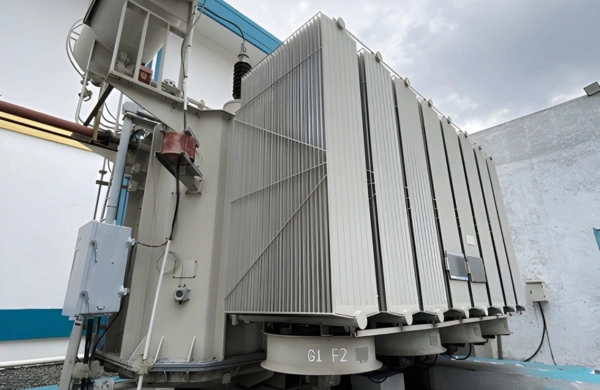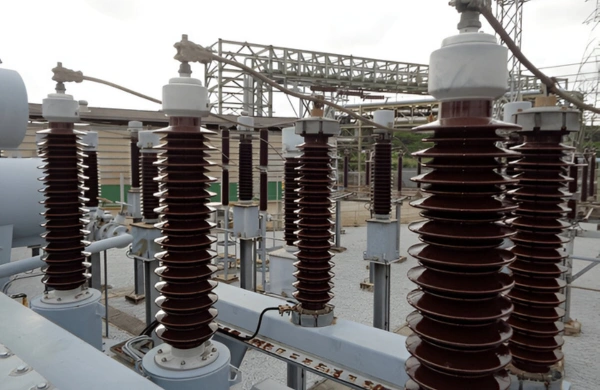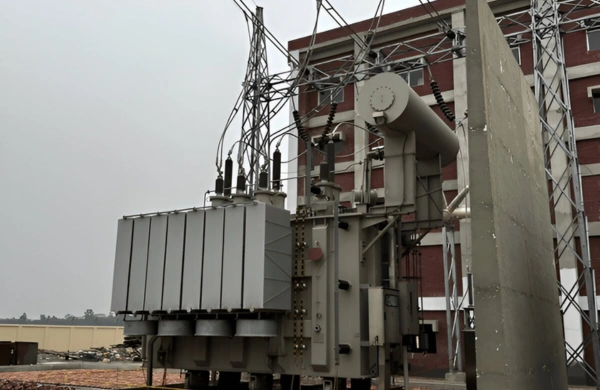Introduction
As power transmission networks expand and demand for stable energy delivery grows, extra high voltage (EHV) transformers have become the backbone of modern electrical grids. Designed to operate at voltages above 132 kV, these transformers handle vast amounts of electrical power while maintaining efficiency, insulation strength, and thermal stability.
In grid substations, industrial plants, and renewable energy integration points, EHV transformers ensure uninterrupted power flow with minimal losses. Zetwerk manufactures high-quality EHV transformers built to international standards, combining advanced materials, precision engineering, and stringent testing. With a proven manufacturing ecosystem in India and global supply capabilities, Zetwerk supports North American utilities and EPC contractors seeking reliable, high-voltage transformer solutions.
Know About Reliable Extra High Voltage Transformers for
Grid and Utility Systems
1. Importance of Extra High Voltage Transformers in Power Transmission
EHV transformers form the core of transmission and substation systems, stepping voltage up or down between generation and distribution levels. They enable efficient long-distance transmission by reducing current flow and minimizing I²R losses.
Key functions include:
- Voltage transformation: Step-up units at power plants and step-down units at receiving substations.
- Grid interconnection: Linking regional grids operating at different voltage levels.
- Load balancing: Maintaining stable voltage and frequency across the grid.
- Reactive power management: Supporting voltage regulation through tap changers and phase-shifting capabilities.
Without EHV transformers, long-distance transmission would be economically unviable due to excessive energy losses and voltage fluctuations.
2. Design and Construction of EHV Transformers
EHV transformers are built to withstand high electrical stresses, mechanical forces, and temperature variations. Their design integrates advanced materials and strict quality control at every stage.
Core:
High-grade, grain-oriented silicon steel laminations are used to reduce core losses and maintain magnetic flux uniformity. Core joints are precision-mitered to minimize no-load losses and vibrations.
Windings:
Copper or aluminum windings are continuously transposed conductors (CTC) or foil-type for improved short-circuit strength and thermal dissipation. Winding geometry is optimized to reduce leakage reactance and withstand high mechanical stress during fault conditions.
Insulation System:
Insulation plays a critical role at extra high voltages. Zetwerk uses:
- Oil-impregnated paper (OIP) or resin-impregnated paper (RIP) insulation for high dielectric strength.
- Epoxy bushings rated for impulse voltage withstand.
- Layered barriers and spacers to ensure uniform electric field distribution.
Cooling System:
To maintain temperature stability, Zetwerk employs ONAN, ONAF, and OFAF cooling configurations depending on rating and site conditions.
3. Core Technologies and Manufacturing Precision
Zetwerk’s EHV transformers are manufactured in advanced facilities equipped with high-capacity vacuum drying ovens, precision winding machines, and automated oil filtration units.
Manufacturing process highlights include:
- Vacuum drying and oil impregnation: Removes moisture to enhance insulation life.
- Core clamping under controlled pressure: Ensures minimal vibration and noise.
- Dynamic balancing of windings: Maintains mechanical integrity under short-circuit forces.
- On-load tap changer (OLTC) integration: Enables smooth voltage regulation during operation.
Each unit undergoes routine, type, and special testing in compliance with IEC 60076 and IEEE C57.12 standards. Tests include ratio, polarity, winding resistance, impulse voltage, short-circuit withstand, and partial discharge analysis.
4. Thermal Management and Cooling Systems
EHV transformers generate substantial heat due to core losses, copper losses, and stray magnetic flux. Effective cooling is essential for longevity and performance stability.
Common cooling systems include:
- ONAN (Oil Natural Air Natural): For lower MVA ratings; relies on natural convection.
- ONAF (Oil Natural Air Forced): Uses fans for higher heat dissipation.
- OFAF (Oil Forced Air Forced): Pumps and fans for heavy-duty continuous operation.
- OFWF (Oil Forced Water Forced): For extremely high-power ratings or space-restricted installations.
Zetwerk designs each system with optimized oil circulation channels, radiator configurations, and monitoring devices like PT100 sensors and Buchholz relays to maintain operational safety and reliability.
5. Insulation Coordination and Dielectric Testing
At EHV levels, insulation reliability determines operational safety. Overvoltages from lightning or switching surges can cause severe insulation breakdown if not properly managed.
Zetwerk engineers implement insulation coordination through:
- Proper clearance and creepage distances.
- Use of impulse voltage withstand testing to simulate lightning surges.
- Partial discharge measurement to detect internal insulation voids.
- Finite element analysis (FEA) of electric field distribution.
Transformers are tested for power frequency withstand voltage, lightning impulse, and switching impulse per IEC and IEEE protocols. These ensure long-term dielectric strength even under transient overvoltage conditions.
6. Reliability, Testing, and Quality Assurance
Zetwerk follows a rigorous testing and inspection program at each stage of manufacturing:
Routine Tests: Ratio, winding resistance, insulation resistance, polarity, and induced overvoltage.
Type Tests: Temperature rise, impulse withstand, and short-circuit strength.
Special Tests: Noise level, dissolved gas analysis (DGA), and load loss verification.
Each transformer undergoes a factory acceptance test (FAT) witnessed by clients or third-party agencies before dispatch. Complete documentation includes test certificates, drawings, and QA plans to ensure full traceability.
7. Applications and Global Utility Use Cases
EHV transformers are used wherever transmission networks require efficient voltage transformation. Common applications include:
- Grid substations: 132 kV to 400 kV class units for long-distance transmission networks.
- Thermal and hydro power plants: Step-up transformers connecting generators to transmission lines.
- Renewable energy hubs: Integrating solar and wind power to national grids.
- Industrial complexes: Feeding large motors, furnaces, and process equipment with consistent voltage.
Zetwerk’s EHV transformers are engineered for long service life, stable temperature rise, and low partial discharge — ensuring reliability in mission-critical grid operations.
8. Zetwerk’s Capabilities for North American Utilities
Zetwerk’s transformer facilities combine high-voltage design expertise, lean manufacturing, and ISO-certified processes to support global clients.
Key strengths include:
- Manufacturing capacity up to 400 MVA, 400 kV class transformers.
- In-house testing up to 1,200 kV impulse levels.
- Advanced CAD and electromagnetic design tools for precise modeling and optimization.
- Flexible engineering support for custom voltage ratings and OEM integrations.
- Export-compliant packaging and logistics meeting North American import standards.
Through vertical integration — from core stacking to final assembly — Zetwerk ensures end-to-end quality and reliability for large-scale grid infrastructure projects.
Conclusion
The efficiency and resilience of power grids depend heavily on the performance of extra high voltage transformers. With increasing renewable integration, grid expansion, and digitization, transformer reliability has become more critical than ever.
Zetwerk manufactures EHV transformers engineered for long-term stability, minimal maintenance, and superior insulation performance. Built to international standards and supported by a robust supply chain, Zetwerk enables North American utilities, EPCs, and industrial operators to achieve grid reliability with confidence.
FAQs
a. EHV transformers typically operate above 132 kV, with common ratings up to 400 kV or higher.
a. They comply with IEC 60076, IEEE C57.12, and ANSI standards for design, testing, and safety.
a. Depending on load, Zetwerk employs ONAN, ONAF, OFAF, or OFWF cooling configurations.
a. Through impulse voltage testing, partial discharge analysis, and field-proven insulation systems.
a. Yes. Custom voltage ratios, tap changer configurations, and insulation classes are available for grid and industrial applications.









